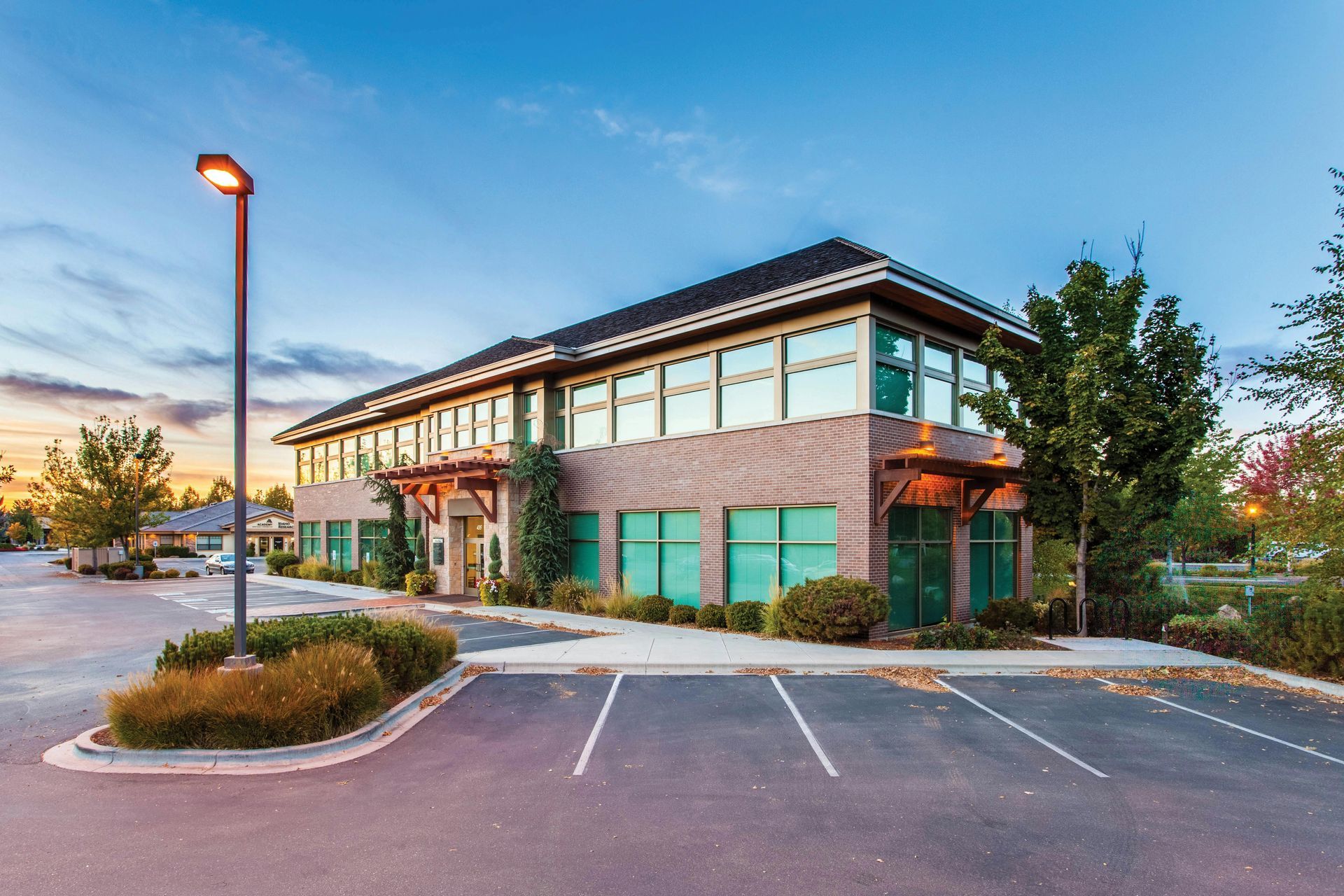October 10, 2025
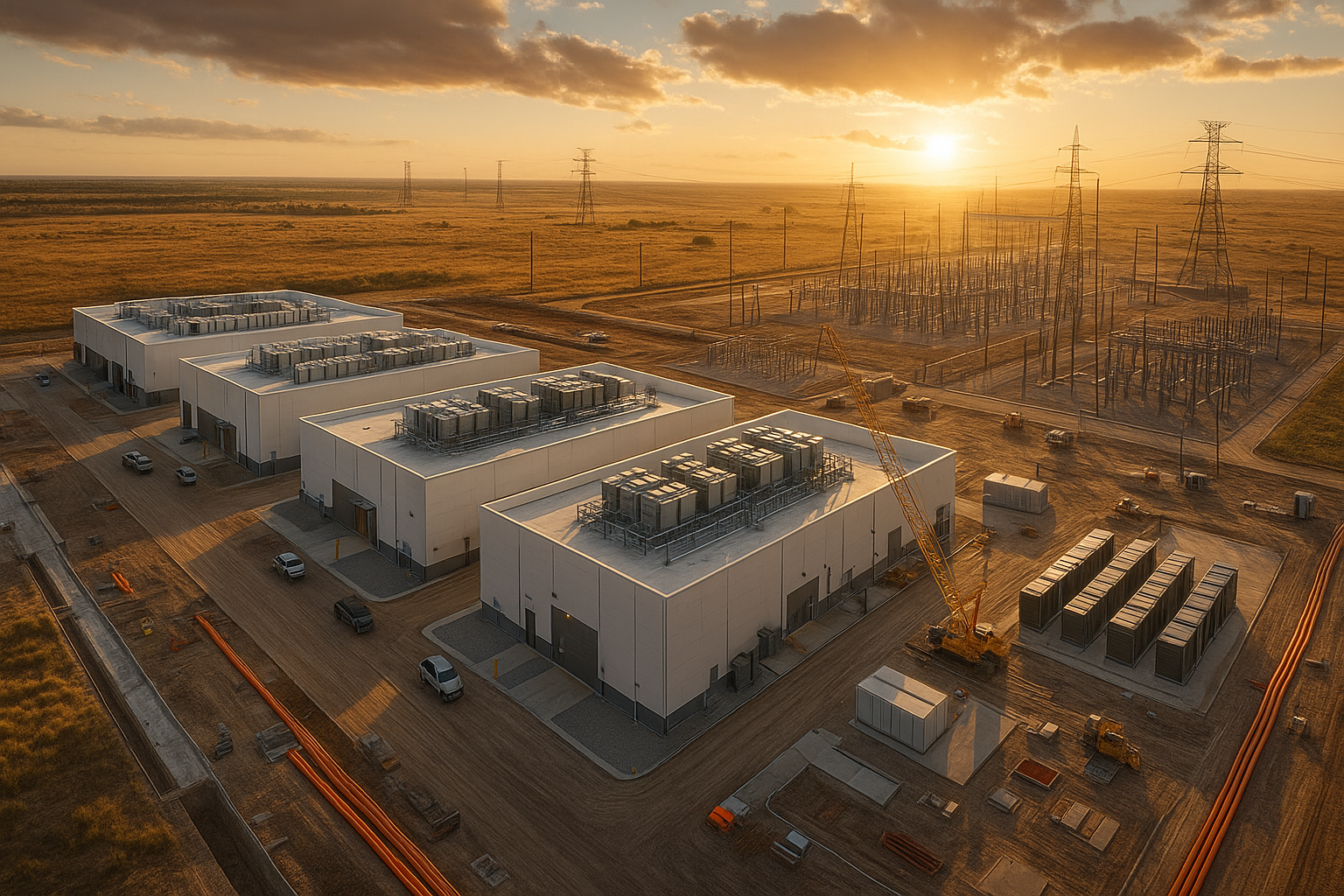
If you’re planning a data center, AI/compute campus, cleanroom, or any other always-on operation in Texas, the site you pick will make or break your speed-to-market and total cost of ownership (TCO). This "playbook" focuses on the decisions that matter most: power, cooling/water, network, land/entitlements, and incentives. We've put this together so owners, operators, and investors can move fast without stepping on a landmine. Throughout, we will highlight how mission critical construction considerations shape each choice.
1) Start Where The Megawatts Are (and Where They’ll Be)
Texas demand is surging—driven by AI, industrial electrification, and population growth—so grid headroom and interconnect timing matter more than ever.
Two practical takeaways:
- Favor metros with proven capacity and pipelines. DFW remains a national leader by absorption and projects under construction, but long lead times for equipment and grid connections are already pushing some deliveries post-2026.
- Expect long queues and plan redundancy. ERCOT is tracking thousands of interconnection requests and billions in proposed transmission improvements—good news, but it underscores the need to validate substation paths and timelines early.
Pro move: If the power company can’t hook you up fast enough, start with a temporary mix of your own power—like natural-gas generators, batteries, and maybe some solar. You can also pick sites near energy sources (for example, in the Permian) to run off-grid at first. Go live on that, then switch over to the main grid when the connection is ready. Plan your construction in phases to match this so delays don’t wreck your schedule.
2) Power Diligence: Questions To Ask On Day One
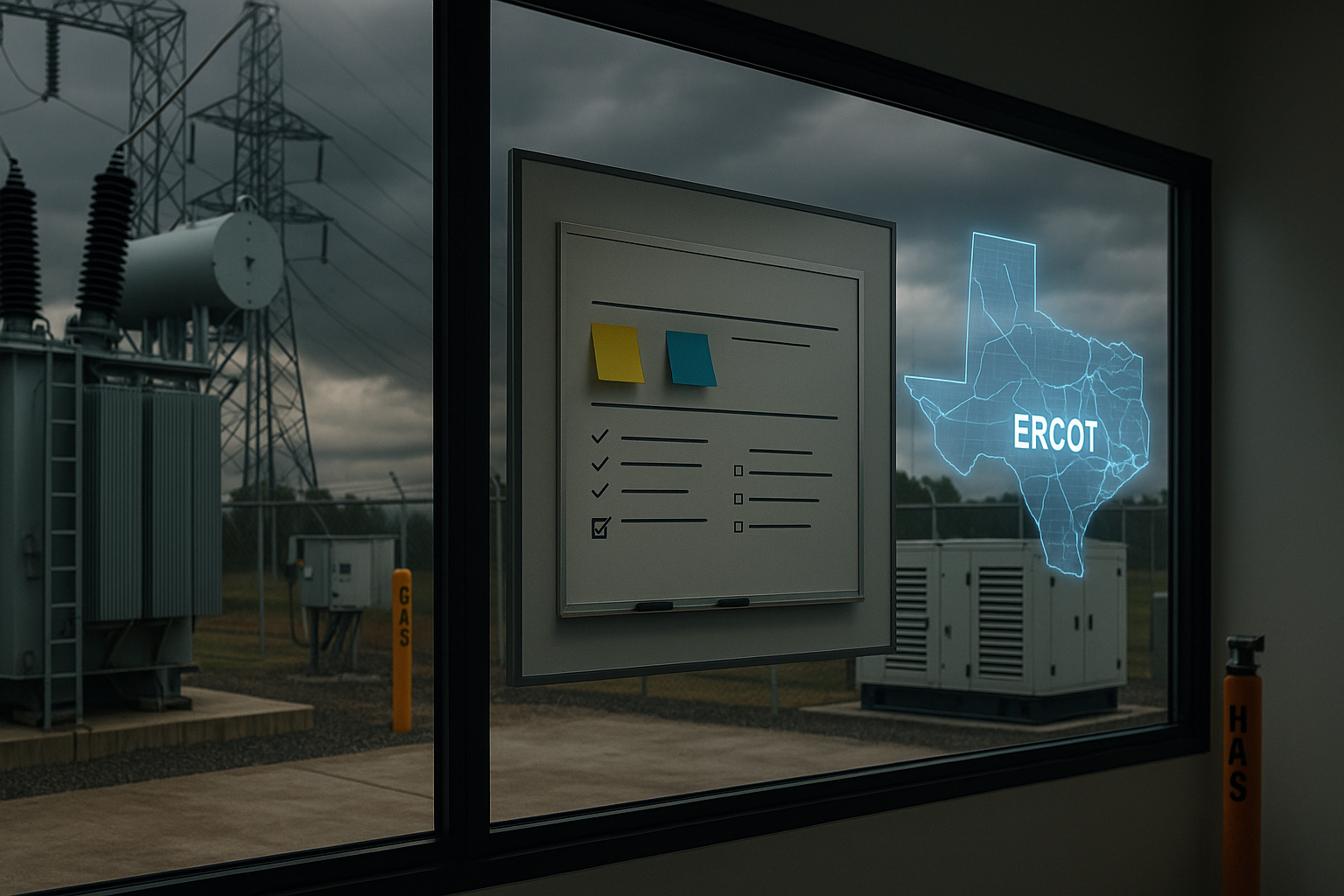
Available capacity & upgrade path:
- How many megawatts can you give us right now?
- What has to be upgraded to get that power?
- Who pays for those upgrades and how long will they take?
Interconnect & schedule
- What step are we on, and what’s the target power-on date?
- What are the next three milestones with dates?
- What could delay this?
Reliability
- In the last 3 years, how often has this line gone out?
- Do you expect any summer shutoffs/curtailments?
- Is there a backup feed if something fails?
On-site generation
- Can we put X MW of generators here without a big permit?
- Do we have enough gas/fuel on site?
- Will noise or emissions be a problem?
ERCOT contracting strategy
- For a 24/7 load, should we go fixed, block+index, or something else and why?
- How much can our usage swing without penalties, and what fees pass through?
- Can we earn money for demand response, and what collateral do you need?
3) Cooling & Water in Texas Heat
Cooling is your second-largest line item after power—and it’s where Texas’ climate bites. Traditional air-cooled systems are simple but power-intensive; water-cooled systems can be efficient but trigger water rights, discharge, and public-perception questions. The current consensus for hot, water-sensitive locales: closed-loop liquid cooling with air chillers for heat rejection to minimize water draw while handling high-density racks.
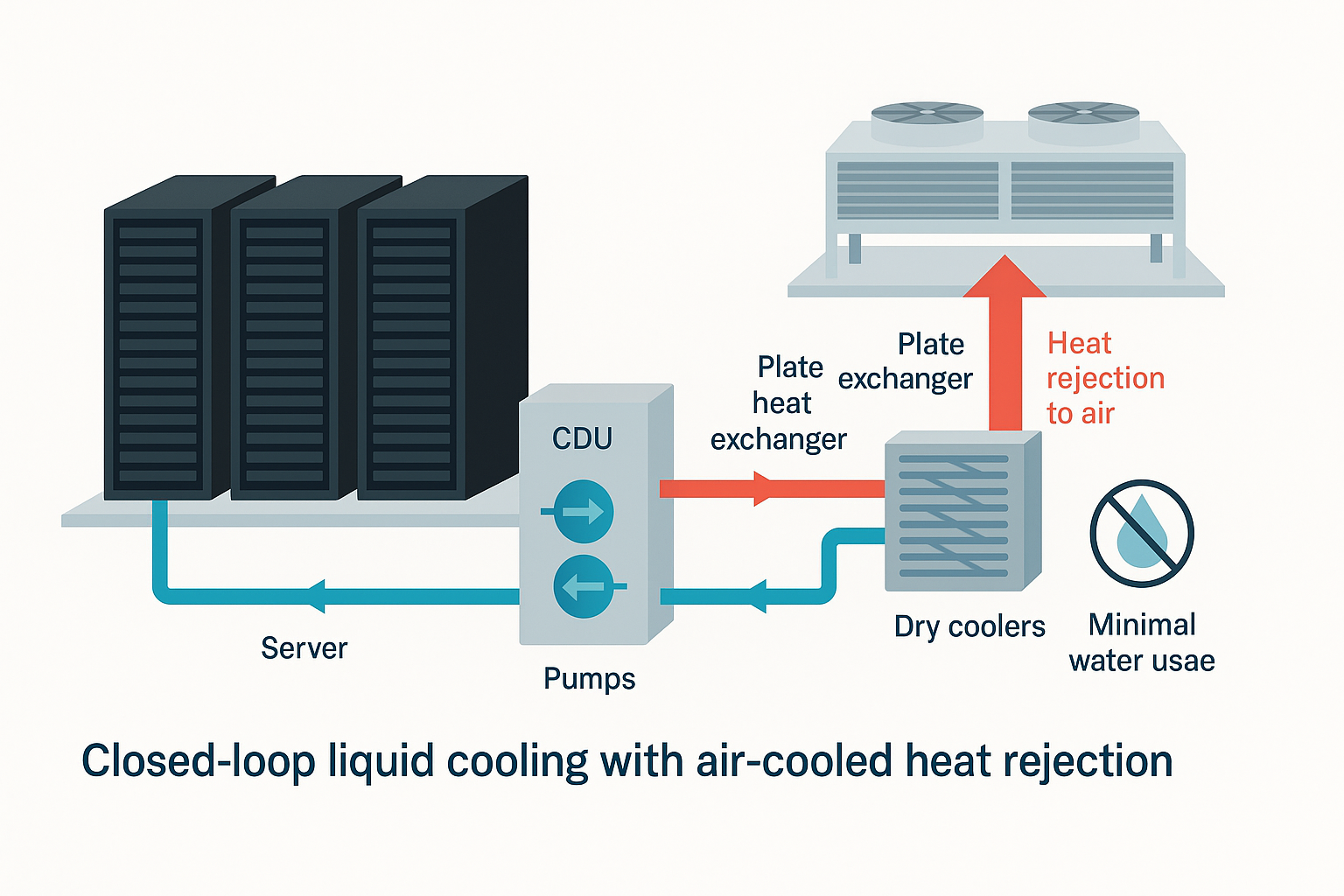
Local context: Local officials in Texas now closely review data-center water use. Verify steady water supply, plan for reuse, and confirm wastewater/discharge permits while you plan power.
Checklist
- Confirm year-round water availability.
- Model WUE/PUE scenarios for each cooling approach.
- Validate wastewater capacity and any pretreatment needs.
- Consider heat reuse (district loops/process loads) for ESG gains.
4) Fiber, Latency, and Network Resilience
Downtime isn’t an option, so treat network like power: assume a failure and design past it.
- Carrier diversity: Look for proximity to carrier hotels like 2323 Bryan Street in Dallas—an internet gateway used by 60+ carriers—then secure physically diverse routes (separate ducts/bridges/conduits) to the site.
Digital Realty
- Backhaul diligence: Verify last-mile ownership, splice points, and restoration SLAs.
- Latency targets: For AI training/edge workloads, map acceptable round-trip latency to your user base and inter-region replication strategy.
5) Land, Zoning, and Speed-to-Market
Texas is generally friendly to industrial and mission-critical uses, but local rules can still slow you down. Land-development guidance puts typical dirt-to-delivery at 12–24 months depending on utilities and entitlements—plan your power schedule around that, not after it.
What to validate early:
- Zoning/land-use for power-dense or high-security uses; noise and height (screens, stacks, penthouses).
- Utility corridors & easements (electric, water/sewer, fiber).
- Floodplain/drainage and
soil capacity (slab design, vibration).
- Security envelope (standoff, fencing, CPTED).
- Environmental: air permits if adding on-site gen via TCEQ standard permits
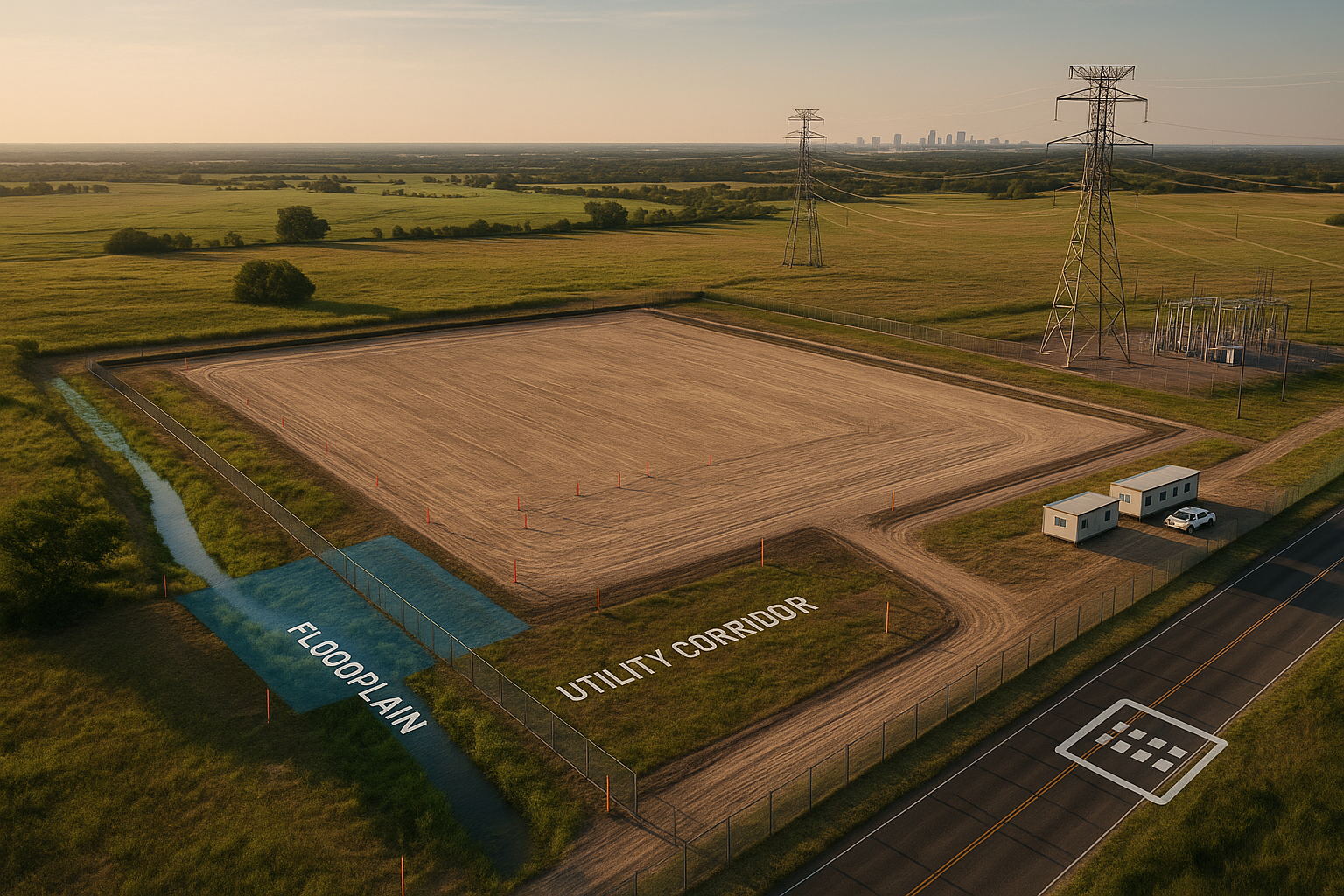
6) Incentives & Abatements That Move The Needle
Texas offers two big tools to cut your property taxes on large, capital-heavy projects:
JETI (House Bill 5)
- What it is: A state program run by the Texas Comptroller.
- What it does: Limits (caps) the school-district portion of your property taxes for qualified projects.
- How it’s sized: Requirements scale with the county (population), your investment, and jobs.
- Think of it as: The modern replacement for the old “Chapter 313” program.
Chapter 312 (Local Abatements)
7) Budgeting The Build: What Really Drives TCO
Power
- What you pay = grid hookup work (interconnect) + electricity price + demand charges.
- Action: run best/worst-case price scenarios using ERCOT forecasts and pick contracts that let you adjust load without big penalties.
Cooling
- Don’t buy just on sticker price. Match the system to rack density and Texas heat.
- Action: model lifetime costs (energy + water) for each option before choosing.
Land & civil
- Surprises here get expensive.
- Action: do geotech early, size drainage, and price any off-site utility extensions before you commit.
Schedule risk
- Delays = money. Transformers and switchgear have long lead times.
- Action: align contractor awards and cash flow with utility milestones and equipment delivery dates.
Why CIP Texas for Mission-Critical Construction Projects?
We live in the details—power screens, network redundancy, cooling/water reality checks, and incentive sequencing—so you can make bankable decisions. Explore our Mission Critical focus and recent education pieces, then fold us into your early feasibility call.


